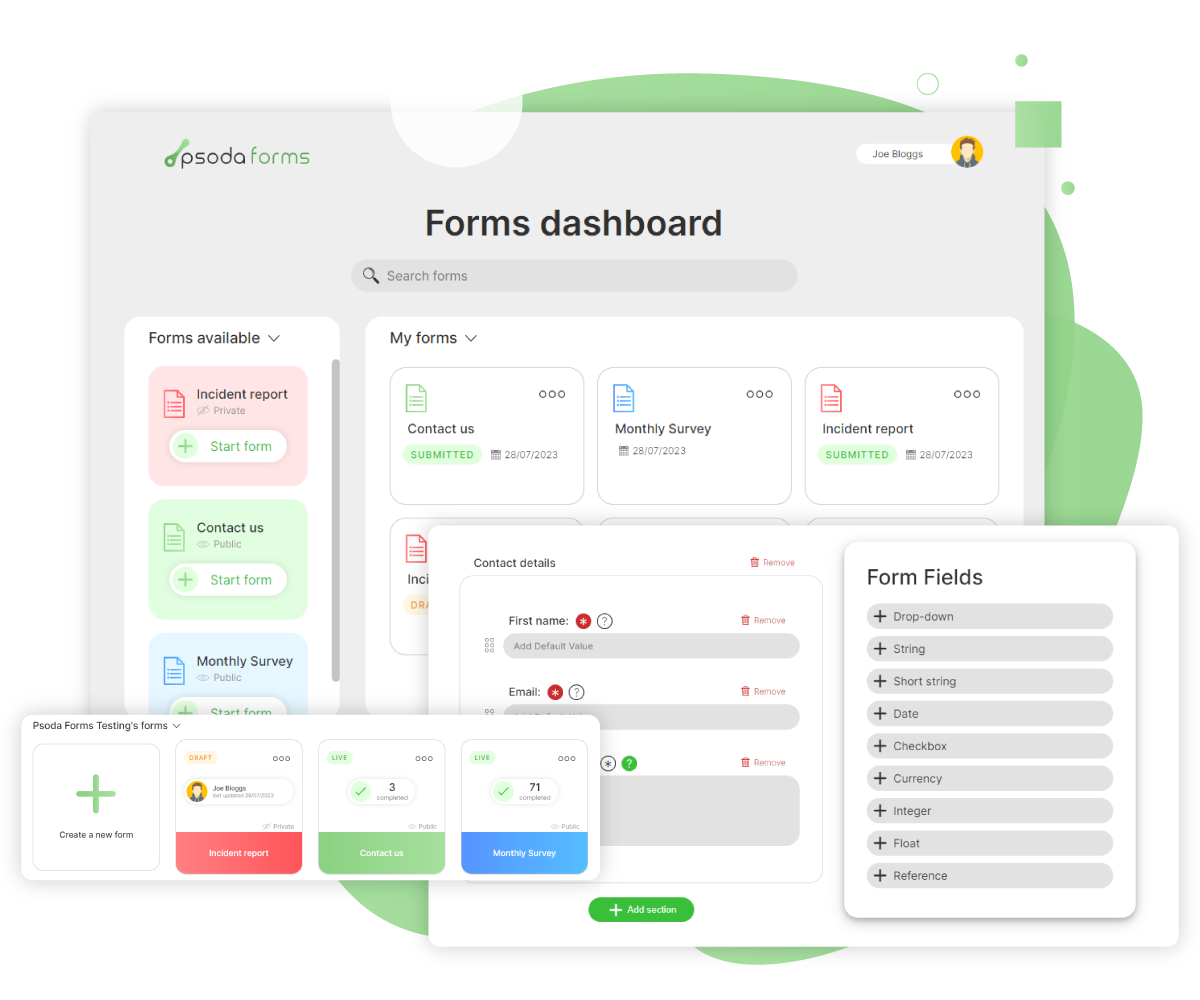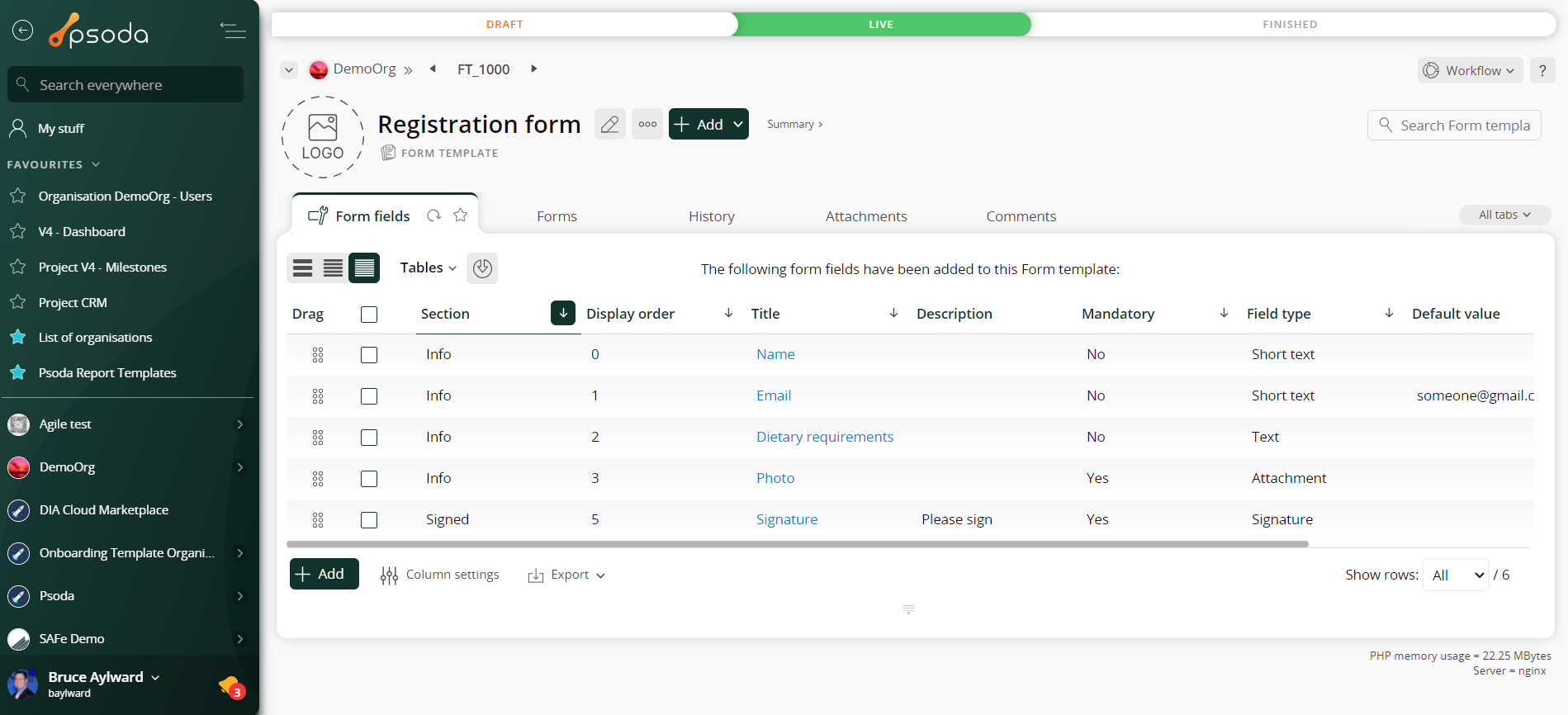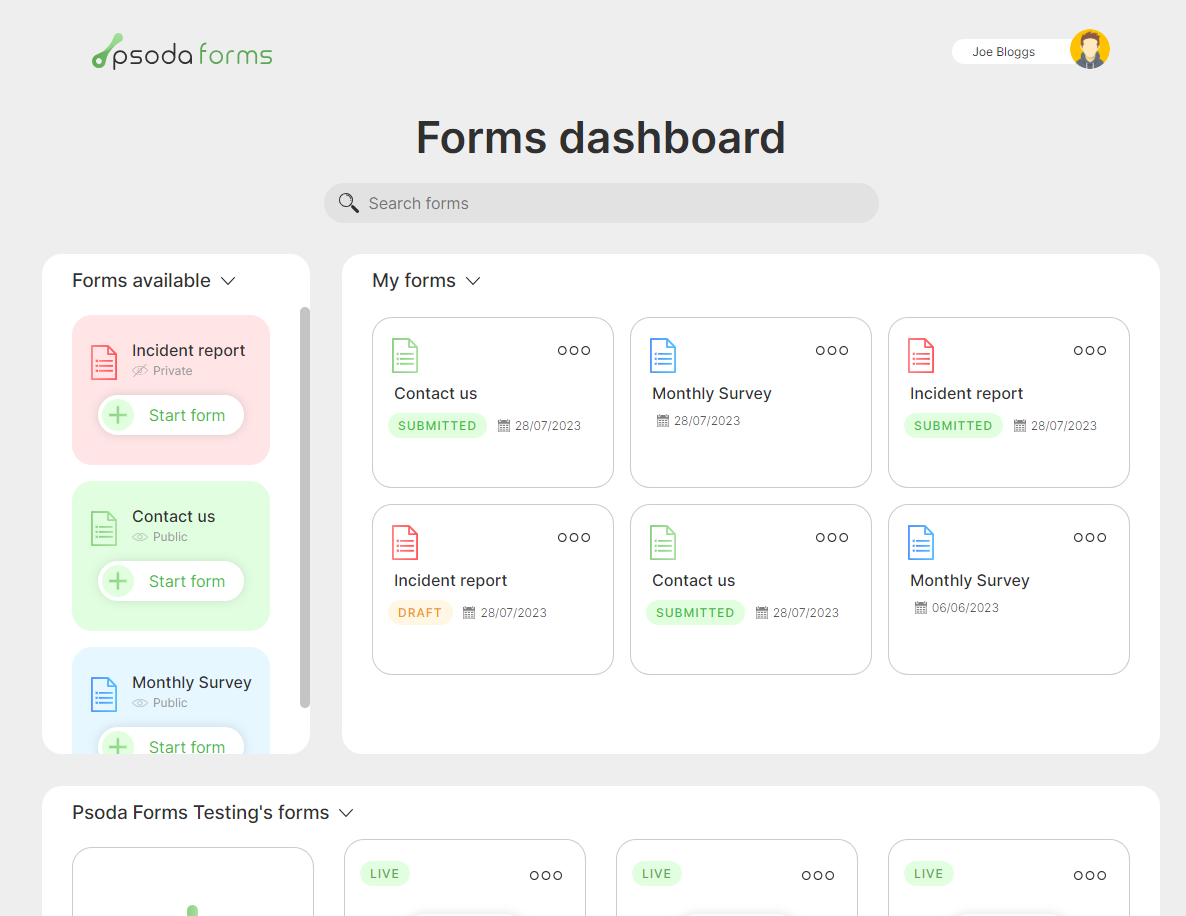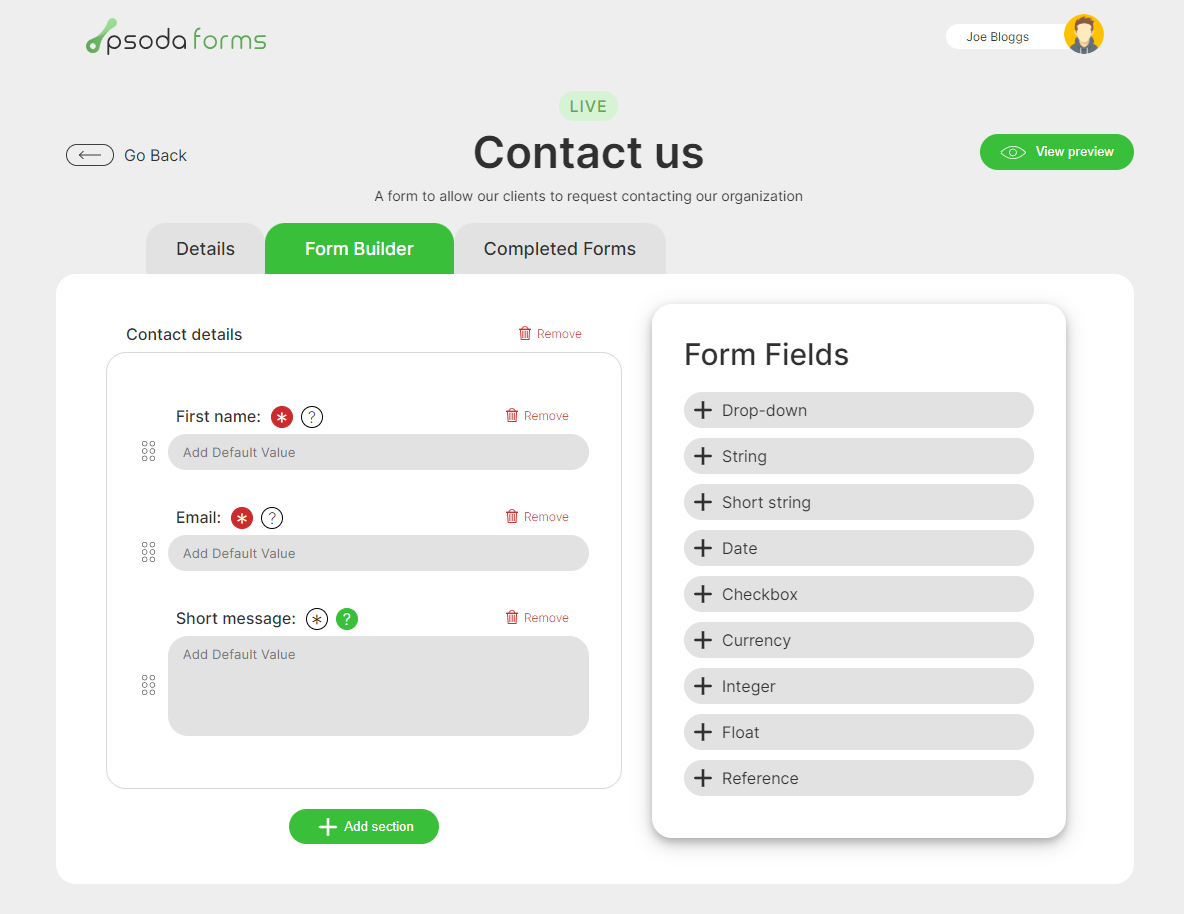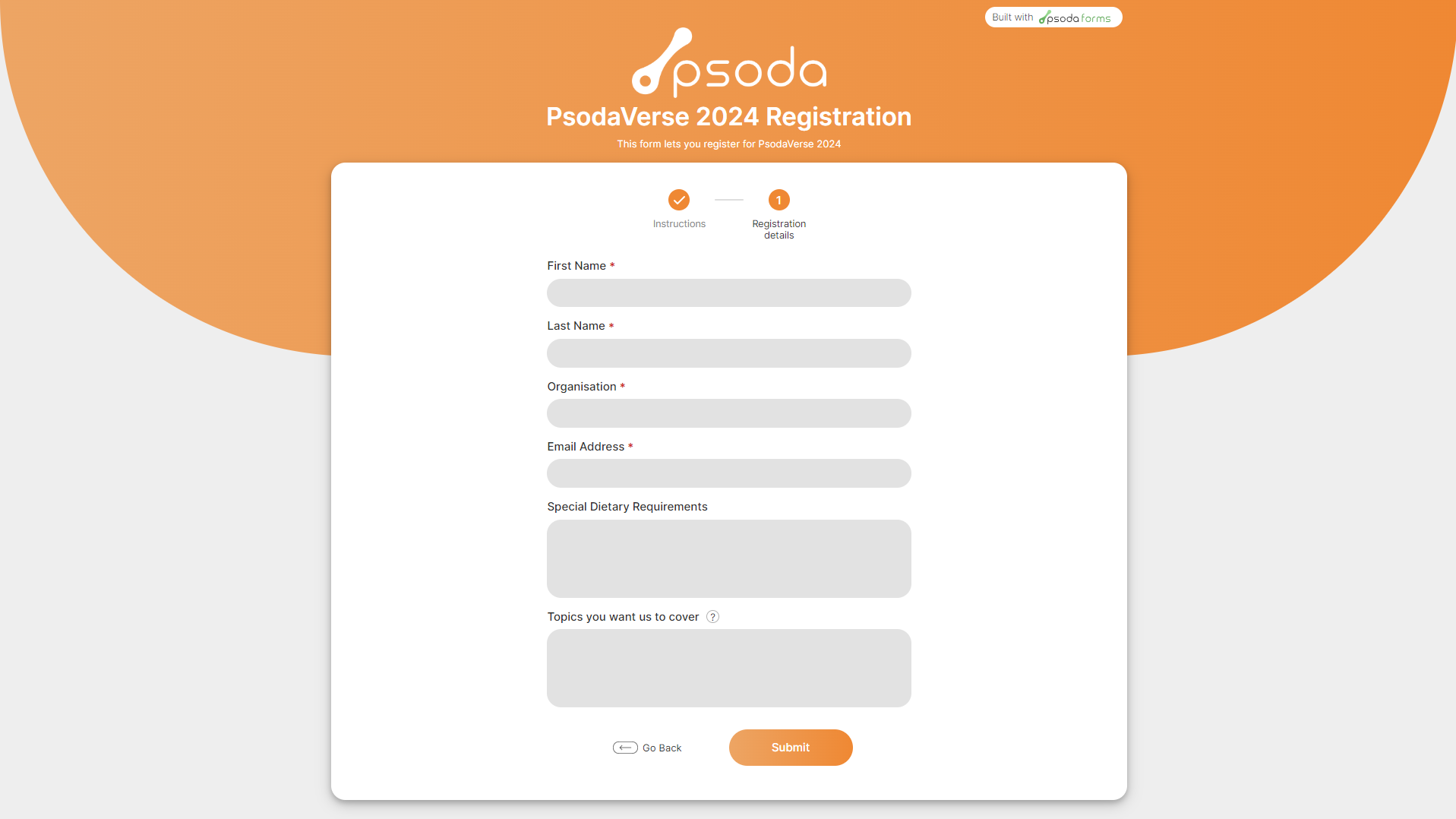The Psoda app has impressive form-building capabilities, however this is primarily confined to the project management and data aggregation interface of the tool. Recognising the popularity of the forms functionality among customers and its seamless integration with the project management features, the team opted to develop a separate app solely dedicated to forms. This new app would feature an interface specifically designed for creating, managing, and filling out forms. I was given the task of designing this app, leveraging the forms functionality already present in Psoda.
User Research
Throughout this project, I utilised a variety of user research methods, including surveys, interviews, and competitive audits. Interviews and surveys were instrumental in gaining insights into how customers currently utilise the forms functionality in Psoda, identifying both beneficial aspects and pain points. This input provided essential requirements for the forms app, such as the necessity for forms to be made public, enabling government and council customers to create forms for the general public. The actual process of building forms and form fields emerged as a key pain point for customers, underscoring the critical importance of this aspect of the interface. Competitive audits proved invaluable in identifying common UI techniques, particularly for elements like input fields, which are the fundamental components of a form.
Prototypes
The initial stage involved crafting low-fidelity mockups using Adobe Illustrator, which served as a foundation for further refinement based on feedback from both customers and the team. This iterative process provided a solid base for developing high-fidelity mockups in Illustrator, capturing more intricate details and visuals. These mockups were then transformed into prototypes using Figma, allowing for a more interactive and realistic representation.
Usability Testing
Both customers and team members engaged in testing the Figma prototypes, ensuring alignment with user expectations and project goals. The developmental team then constructed a prototype version of the app, which underwent further usability testing and refinement until the initial release. In the following months, customers continued to provide feedback on the PsodaForms interface, driving ongoing iterations and the addition of new features aimed at enhancing its capabilities as a powerful forms-building application.
Customers are now happily using the application to build and manage forms.
Customers are now happily using the application to build and manage forms.

